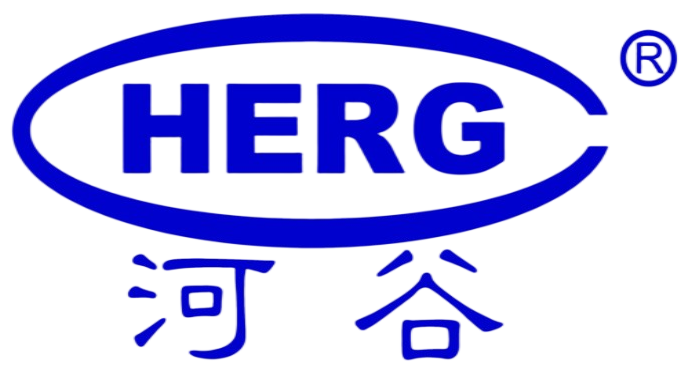Gear is a commonly used mechanical transmission part. If the gear breaks, it must be shut down for maintenance, or it may endanger the safety of equipment or even cause major accidents. Simple replacement after gear fracture cannot eliminate the risk of gear fracture again. It is necessary to analyze the factors causing gear fracture and make improvements. In order to establish a gear failure information database and seek a complete set of factors affecting gear fracture, we collected a large number of wheel information from different equipment at the fracture location, and analyzed some of the samples. The samples of broken gears come from cylindrical spur gears, helical gears, gear shafts and bevel gears among various equipment such as steel rolling machines, coal cutters, traction locomotives, blowers, marine engines, cranes, aircraft, engineering machinery, oil production machinery, mine hoists and large parabolic antennas. The types of equipment and gears under load are representative.
Classification and correlation analysis of gear fracture factors
The life cycle of gears can be divided into several stages, such as design, manufacturing, use and maintenance, failure and scrapping. In order to avoid early fracture failure, it is necessary to determine which factors affect gear fracture during the life of the gear. Some gear fractures are caused by a single factor, and some are caused by a combination of multiple factors at one or more stages.
Factors affecting gear fracture in different stages of gear life
2.1 Factors affecting gear fracture at design stage
The data of the fractured gear sample shows that the factors that have a great influence on the occurrence of gear fracture in the design stage are respectively the structural design defects of the gear and the small transition fillet of the root or top of the gear, the large interference fit, the improper selection of materials, the small safety factor, the improper selection of the gear module and pressure angle, and traveling wave resonance.
2.1.1 Influence of gear structure and transition fillet design on gear fracture In gear fracture samples, the frequency of influence of gear structure and transition fillet design on gear fracture exceeds 1/3 of the total frequency of influence at design stage, and the correlation is very obvious.
In the gear fracture samples, the fatigue fracture exceeds 50% It is both fatigue fracture and crack source. Structural design defects of gears, such as abrupt change of section shape, unevenness of thickness, improper design of keyways, oil holes, etc., are easy to cause cracks, while too small transition fillets at the top or root of the gear are easy to cause cracks during heat treatment, and stress concentration under the action of working load, causing cracks to expand until they break. The example of gear fracture proves that the tooth root crack formation is highly sensitive to the too small transition arc radius.
2.1.2 The influence of excessive interference in the fitting on the gear fracture. If the interference is too large, the gear assembly requires a large amount of hot assembly expansion, so a higher heating temperature is required. The excessive heating temperature may conflict with the heat treatment temperature of the material, which also causes excessive expansion of the gear. After assembly, a large assembly tensile stress is left at the root of the gear. Because the heating method is difficult to ensure that the gear is heated evenly, which leads to uneven heating of the gear and worsens the distribution of assembly tensile stress at the root of the gear.
In gear design, the contact strength of the gear tooth surface and the bending strength of the tooth root are usually calculated according to the conventional method, and it is easy to ignore the superposition effect of the stress generated by multiple factors on the whole gear, such as the tangential tensile stress generated by interference assembly, the bending tensile stress generated when transferring the torque, the residual tensile stress of the subsurface heat treatment, the grinding stress, and the stress concentration caused by the pin groove. Although the timing gear of an engine meets the general design strength requirements, the axial fracture of the gear is caused by the combined action of the above stresses.
In addition to directly affecting the gear fracture, there are also indirect factors affecting the gear fracture. For example, the impeller and shaft of a certain blower adopt interference fit, and the impeller is heated and naturally cooled during assembly. The rotor produces shaft extension bending deformation during the cooling process, which causes uneven gear load and impact resulting in Z final fracture during operation.
2.2 Factors affecting gear fracture in manufacturing stage
The sample factor data of fractured gears show that the major factors influencing gear fracture in the manufacturing stage are heat treatment, assembly quality, tooth root surface roughness, casting forging welding quality, and machining tool marks, among which 63% of gear fracture is related to heat treatment.
2.2.1 Influence of heat treatment on gear fracture Among the factors influencing gear fracture caused by heat treatment, insufficient hardness of tooth root surface and tooth end, too shallow and too deep or uneven penetration layer, improper heat treatment, insufficient tempering, coarse organization, black reticular organization, etc. are the main factors.
(1) The influence of low hardness of tooth root and tooth surface on gear fracture: heat treatment affects the mechanical properties of gear through the hardness of gear surface and center, hardness gradient and organizational uniformity. The lower surface hardness reduces the contact fatigue strength of the gear surface. Under the action of alternating stress, the gear mating surface gradually wears, forming heavily worn gear surfaces, surface pits and even peeling pits. At this time, the gear transmission overlap decreases, the transmission load borne by adjacent gears increases, and impact occurs during transmission, thus reducing the stability. The experimental results show that the Z large tensile stress of the tooth root increases significantly after the wearing of the gear mating surface, and the gear teeth are in a dangerous state and easy to fracture. Lower hardness at the root of the gear will reduce the bending fatigue strength of the gear.
(2) The influence of the depth and uneven thickness of the penetration layer on the gear fracture: the depth of the hardened layer on the tooth surface is insufficient and the hardness of the tooth center is low. Under the action of the contact load, the thinner penetration hardened layer is difficult to be crushed by the softer center. The peeling of the hardened layer and the plasticity of the tooth body increase the movement gap, resulting in impact load. The impact load accelerates the growth of the fatigue crack generated at the root of the tooth, resulting in the reduction of the effective bearing section. The tooth suddenly breaks because it cannot bear the working load after Z.
The hardness gradient from the surface to the center is too steep, which will produce strong residual tensile stress on the interface between the surface and the center. When working stress and residual tensile stress act together, it is easy to cause cracks on this interface and expand due to fatigue. Too steep hardness gradient not only accelerates the formation of cracks in the transition zone, but also causes deep peeling and accelerates the early fracture of gears.
2.2.2 Impact mechanism of gear assembly quality on gear fracture: gear assembly quality affects gear fracture failure in many ways
(1) When the fitting error between gear or shaft and bearing is large, it is easy to cause gear eccentric load and impact. The gear eccentric load causes abnormal meshing area, which reduces the meshing area and significantly increases the load per unit area; It also makes the position of the gear shift, that is, the shift of the big stress point Z, which causes the uneven force on the gear itself, and the gear fracture is often caused by the force concentration at the eccentric load. This kind of dislocated tooth engagement produces impact and eccentric load, and the Z end is the early fracture of the gear.
(2) The excessive fit interference will cause excessive assembly stress, which will produce large residual tensile stress on the gear, and may even exceed the bending stress generated by external load. When the two kinds of stresses act together, they may exceed the bending strength of the gear and cause gear fracture.
2.2.3 Effect of tooth root surface roughness or tool mark on gear fracture
Roughness of tooth root surface and existence of knife marks are easy to induce fatigue cracks. The bearing mode of the gear teeth is cantilever loading. The large bending stress Z is at the root of the gear teeth, and the transition fillet at the root of the gear teeth is too small, resulting in stress concentration, where stress superposition is formed. The alternating stress acts on the cracks at the root of the gear teeth and causes them to expand, causing the residual section of the gear teeth to break instantaneously when it is insufficient to bear the working load. The fracture morphology analysis of the fractured gear shows that many fatigue crack sources on the fracture surface of the gear teeth occur at the machining tool mark.
2.3 Influencing factors of materials on gear fracture
2.3.1 The influence of inclusions in materials on gear fracture mechanism The strength of gear steel is generally high, while the higher the strength and the lower the plasticity of steel, the more obvious the sensitivity to notch. When the gear is subjected to external forces, the inclusion in the material is difficult to deform, while the metal around it flows under great tension, which separates the interface between the metal and the inclusion and forms a gap. The non-metallic inclusion plays a role of notch and stress concentration in the steel, so cracks are generated and their expansion is accelerated, leading to gear fracture.
2.3.2 Influence mechanism of insufficient mechanical properties of gear materials on gear fracture Some fractured gears show brittle fracture characteristics, which is obviously manifested by poor material properties. Some are plastic fracture, but their properties are not enough to resist external load. If there is no improper material selection, it means that the manufacturing process, especially heat treatment, has not obtained the necessary mechanical properties. The mechanical properties are achieved by the combination of "gear material+heat treatment process". The mechanical properties are insufficient or the heat treatment process is unsuitable, so the process needs to be improved; Or even if the heat treatment process is strictly followed, the expected mechanical properties cannot be obtained, which is due to improper material selection and need to be re selected.
2.4 Factors affecting the use stage
Overload and impact load are the main factors that affect the gear fracture in the service phase. First of all, the judgment of the service conditions may be inaccurate during the design, and there is a lack of reasonable reserves of overload capacity and overload protection design, which should be solved when the safety factor is set; Secondly, the use conditions are not clearly defined in the user manual; Third, despite the explanation, the user was not provided with necessary training to prevent overload and impact load in use. The peak value of impact load is large and lasts for a short time, which are mostly accidental factors. In addition to the reasonable reserve of anti impact load capacity and peak interception design, it is necessary to reduce the chance of impact load in use, especially to avoid excessive peak value of impact load. The eccentric load causes stress concentration, worsens the condition of the bearing gear, and causes the gear to partially exceed the bearing capacity and fracture. Improving assembly and installation quality is an important way to reduce gear eccentric load.

